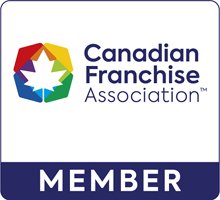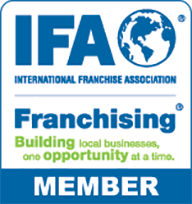How to Read a Franchise Disclosure Document
Last week, we looked at what the Canadian Franchise Association (CFA) recommends franchisors include in their Franchise Disclosure Documents. This week, we will discuss how to read one of these documents, which are brimming with useful information for prospective franchisees.
The Franchisor, its Predecessor, and its Affiliates
This is an overview of the brand’s history, which can hold valuable information such as whether the company has been bought and sold throughout its history. Read this in conjunction with the section about who runs the company and their backgrounds. A change in ownership might be a good or bad thing. You’ll want to read up about the health of the parent company, too, and ask questions so you fully comprehend the journey of the brand through its various owners.
Litigation
Franchisors must disclose all their recent litigation against both the franchise and individuals who run the franchise. You might expect this to be empty for a good franchisor, but keep in mind that even the best franchise companies are likely to have a couple of cases. A small operation that has a lot of litigation currently going on or in its past is an obvious red flag, especially for things like fraud or misrepresentation.
A rule of thumb suggested by Ed Teixeira, author of The Franchise Buyer’s Manual, is to look at the number of locations a franchisor has and the number of cases either settled or ongoing. It should be well under two percent. For example, if a franchise has 500 locations, Teixeira would consider 10 or even eight cases of litigation to be too high.
Something to consider when looking at the litigation is to go beyond just the numbers. If the franchise has changed ownership, some of those cases might be left over from the previous owner, for example.
Bankruptcy
This section will not only tell you if the franchisor itself has gone bankrupt, but also if any of its key people have filed for bankruptcy. If a person has filed for bankruptcy themselves, that is worth a few questions, but if the actual franchise has filed for bankruptcy, that will be worth some heavy scrutiny.
Franchise Locations
The number of new franchise locations will give you an overall picture of franchise health and tell you if the franchise is shrinking or growing. You should look for both corporate owned locations as well as franchised locations and how many franchises have had to close or change ownership recently. Look for whether those locations were sold, terminated, not renewed or transferred to another franchisee or to corporate ownership.
The number of new and current franchises in operation should be greater than the number of terminations, transfers, nonrenewals, re-acquisitions, and closures combined. You want to join a growing, healthy franchise.
Initial Investment
Consider the entire cost of the investment, including the franchising fee, marketing, signage, equipment, leases and other expenses. There will be an estimate for the additional capital you’ll need to get your business off the ground. Many franchises will use an estimate of three months and provide lower estimates to make the initial investment number seem lower. Teixeira says a good estimate of additional capital required to start the business is about 10 percent of the franchising fee. Anything below five or six percent is a warning sign that the franchise isn’t being honest with potential franchisees about how much it will cost to get their business up and running.
Fees and Expenses
Royalties are clearly the big ongoing fee to think about, but they’re not the only fees. You’ll want to be sure a franchise’s royalty fees are in line with other franchises in the same industry. Also, keep an eye out for other fees like software licencing fees that franchises might tack on to raise the percentage of fees owed.
Financial and Potential Profit Statements
An important distinction to make when assessing a franchise’s financials is whether it is making money from ongoing royalties, which is a sign of a healthy system, or if it’s getting the majority of its money from sales of new franchises, which can be a sign that the current system is in poor health.
A franchise will tell you how much money you could make, and while these numbers look exciting, you’ll want to make sure you understand how exactly the franchise came up with them and make sure that process is based in reality and not unrealistic assumptions.
Restrictions on Products and Services
Check and see what restrictions are placed on franchisees. These could include being required to buy products and services from only approved partners. Sometimes these deals will include rebates, like if your franchisor forces you to buy high-priced products from a partner and then gets a rebate from the partner from your payments to them. Another tactic is to require a high fee like $10,000 for approving a new vendor a franchisee might want to work with. This is usually done to keep sales within a small network of suppliers rather than having franchisees deal with whoever will give them the best price.
That’s not to say all of these partnerships are bad for franchisees. Legitimate partnerships between franchisors and vendors or purchasing co-ops consisting of multiple franchisees in a system can help save money.
Territory
It’s all about exclusivity when it comes to territory. Some franchisors offer it while others do not. Make sure you know exactly what you’re getting in terms of territory and exclusivity. Many franchises will help you decide a good location with demographics they’ve gathered about cities and neighbourhoods they are interested in entering.
Something else to consider is whether the franchise’s products are sold in other outlets like stores unrelated to the franchise. This will mean extra competition for you.
Renewal, Termination & Dispute Resolution
Get all the details about how a franchisor can terminate your agreement and how disputes are resolved. Some franchises opt for arbitration, which can be less costly, but favour the franchisor. Many franchisors require litigation to be brought forth in a specific area of the country.
After you’re done reading the Franchise Disclosure Document, get on that phone and talk to as many franchisees as you can. Ask them how their relationship with the franchise has been so far and what their experience has been when it comes to dispute resolution. FranNet works with trustworthy franchises and can connect you with the perfect franchisor to make your dreams of business ownership come true. Sign up for a free FranNet franchise search and consultation today.





